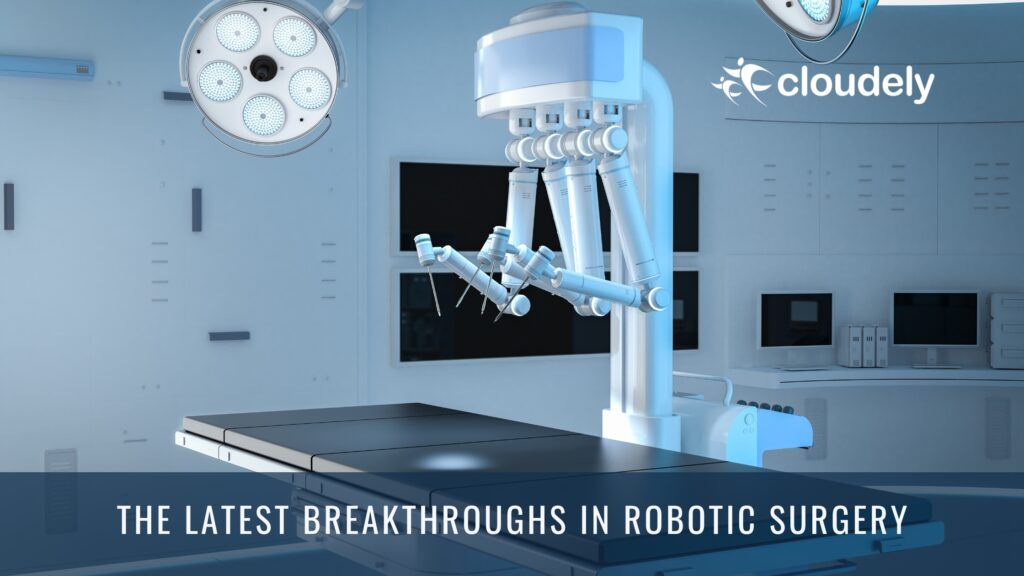Robots are now being used extensively, and as a result, surgery has changed significantly by allowing surgeons to perform much of their work using accurate and flexible methods. The Automated Endoscopic System for Optimal Positioning (AESOP) was created in 1993 and was the first robotic surgical tool to spur various developments in robotic surgery. Such early enhancements in robotic surgery are the basis for current growth in healthcare.
Rise of Robotic Hysterectomy
One of the significant transformations employed by robotic surgical systems is hysterectomy. It is notable that hysterectomy, which refers to the surgical removal of the uterus, is among the most frequently performed gynaecological procedures. Traditionally, hysterectomies were performed through large abdominal incisions or smaller incisions in the vagina.
Using minimally invasive techniques, robotic systems like da Vinci allow gynaecologists to perform hysterectomies through several small incisions. The rise of robotic hysterectomy has been remarkable in recent years.
The advantages of robotic hysterectomy over older open and laparoscopic techniques include:
- Minor incisions make the recovery of your body faster.
- Magnified 3D HD view of the surgical area.
- EndoWrist instruments of the robotic arm provide 7 degrees of wrist motion like the human wrist.
- Tremor filtration and motion scaling allow for precise surgical movements.
- Surgeons can perform the surgery while seated comfortably at the console.

Advances in Obstetrics and Gynecology
Robotic systems are also finding increasing applications in other areas of obstetrics and gynaecology. Some of the developments include:
- Robotic laparoscopic sacrocolpopexy for treating pelvic organ prolapse provides benefits like reduced blood loss, shorter hospital stays and faster recovery compared to open surgery.
- Robotic myomectomy is used to remove uterine fibroids. It enables the removal of large fibroids through a minimally invasive approach with a low risk of complications.
- Fertility-preserving surgeries for the treatment of early-stage cervical, ovarian and endometrial cancers using the da Vinci system.
- Robotic gestational sac excision and fetal removal are used in cases of failed miscarriage to avoid major surgery.
- Robotic tubal anastomoses and nephrectomies are being implemented for the treatment of tubal factor infertility and benign kidney tumours.
The gynecologic procedures that use robotic systems have increased primarily because of their advantages, such as high-definition 3D views, better ergonomics for surgeons and less patient recovery time.
Smartening Up Wireless Capsule Endoscopy
Capsule endoscopy has been a breakthrough for intestine examination using swallowable cameras. Nevertheless, some limitations come with traditional capsule endoscopes, such as a lack of navigation capacity or active intervention performance abilities. Some of the leading technologies include:
- Inductive coils-based near-field wireless power transmission is used to power capsules without batteries.
- A remote-driving magnetic field controls the inner movement of a capsule from outside through an external magnetic field.
- There are hybridized instrument layouts that take advantage of magnetic, video and other modalities that allow for real-time 3D tracking of position and orientation in capsules.
- On the other hand, AI-based computer vision is helpful in the automatic detection of lesions during video capsule endoscopic examinations.
- For instance, minimally invasive capsules can include sensor modules for diagnosis and magnetic-controlled therapeutic devices.
These smart technologies remove certain restrictions and bring capsule endoscopy closer to a genuine endoscopic platform.
Advancing Horizons in Ophthalmic Surgery
Ophthalmology is experiencing a revolution in surgical procedures through robotic and AI-assisted technologies. The new emerging patterns consist of:
- Cataract surgical systems like Catalys Precision+ can now be used to fragment lenses in the eye without making any incision, using femtosecond lasers, thus yielding better outcomes.
- Devices for autonomous vitreoretinal surgery like IOPort, as well as IOL implanting robots such as IRISS, have simplified various types of retinal procedures, including cataract surgery.
- AI-powered diagnostic systems demonstrate the capability to detect diabetic retinopathy, age-related macular degeneration, and glaucoma with high accuracy.
- Chatbots utilizing natural language processing are meant for appointment scheduling related to eyes and responding to questions about patient’s postoperative care.
- Surgeons today can prepare themselves for complicated eye operations with the help of surgical simulators that are combined with augmented/virtual reality and AI technologies.
- New generation miniature imaging capsules are developing to allow early disease detection and therapy follow-up examination of the eye’s internal structures.
In this area of increasing prominence, robotic technologies have more precise vitreoretinal surgery and do not require as much human specialist support.
Conclusion
Robotics are changing the way healthcare is delivered, offering more precision, quicker recovery, and better results for patients. As this technology grows, it is evident that robotics will play a key role in the future of surgery.
At Cloudely, we are a proud to support global leaders in healthcare with our digital transformation expertise. If you are looking to innovate and bring the benefits of latest technology to your medical practices, let’s chat. We are here to help you take the next step. Contact us.
